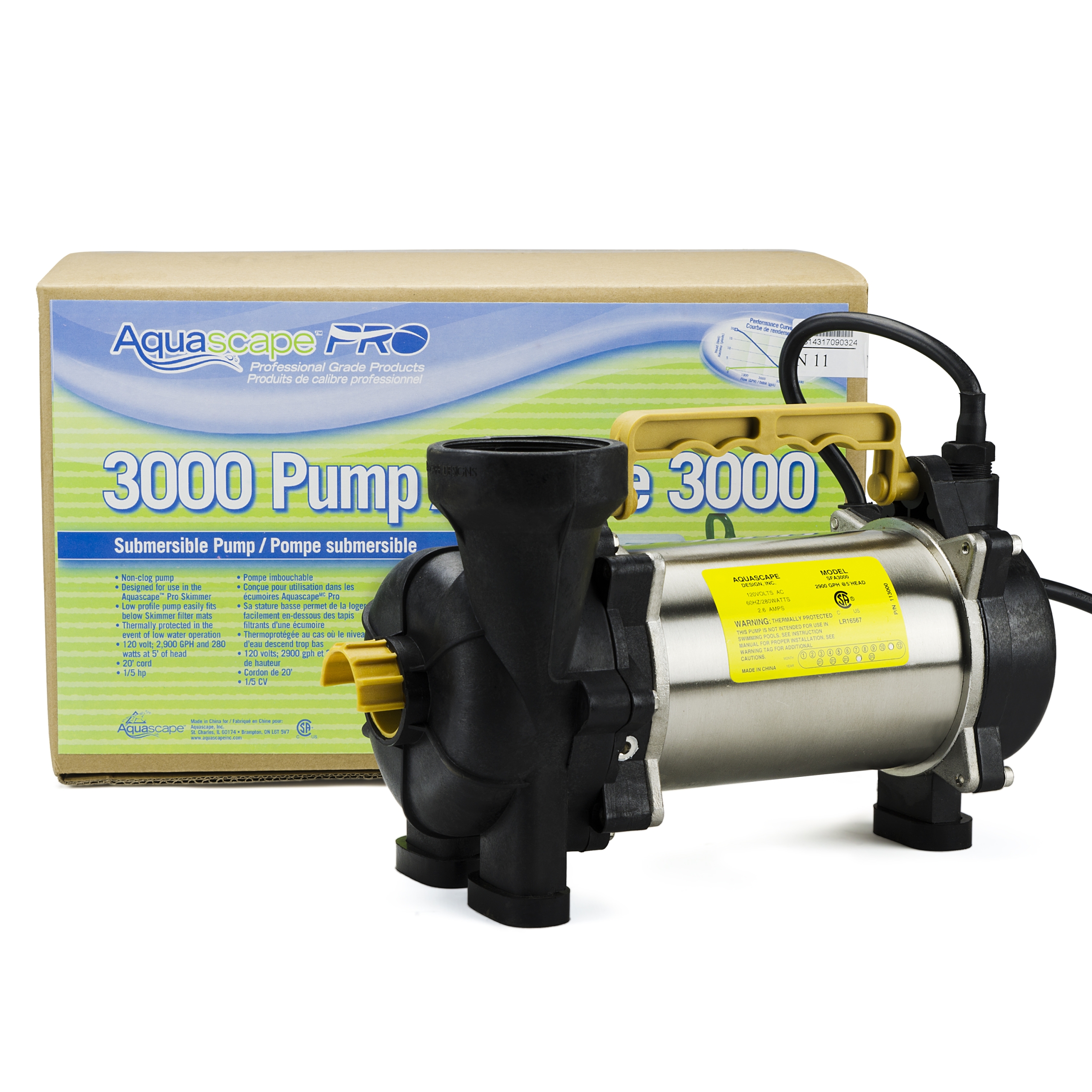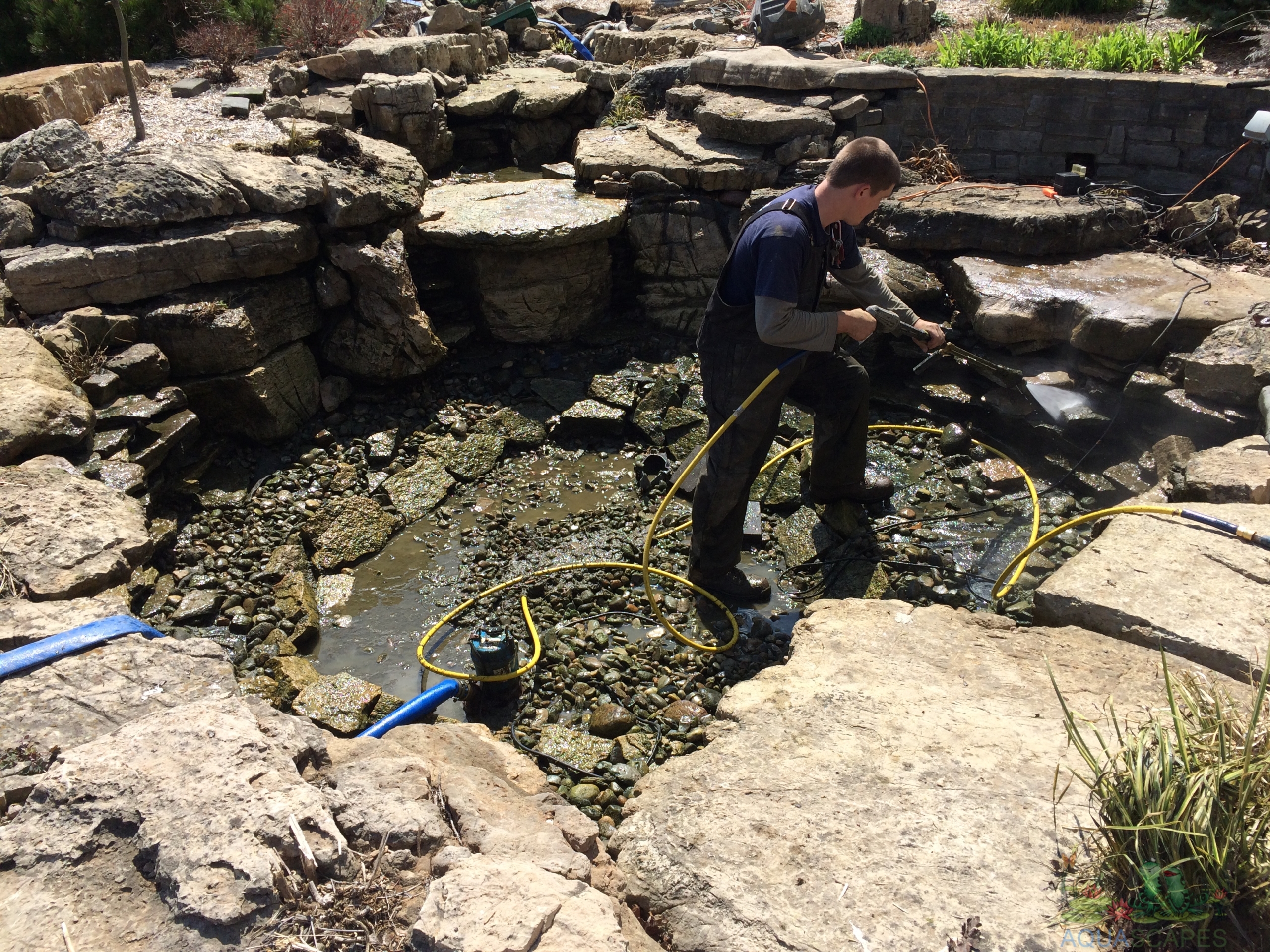Best Pond Pump Information 2021
Pumps keep the water in your pond healthy. They help evenly spread nutrients in the water to fish, plants and other aquatic life. Running water prevents stagnation and cuts down on algae and mosquitoes. Keeping the water moving ensures that oxygen levels are distributed throughout the pond. Pumps also provide power for a pond’s water features, like waterfalls and fountains.
This guide will help you learn about the best pond pumps for your garden.
~
The best water pumps for your pond and its fountain or waterfall come in variety of types and styles. They include submersible, external, magnetic drive and direct drive. Each of these water garden pumps offers its own advantages.
Submersible Pumps: These pumps are designed to work while wholly submerged in water. Typically, they are installed in the deepest part of the pond. Submersible pumps can be placed either directly into your pond or in a skimmer box or pond vault.
- Easy to install.
- Work well in environments that capitalize on a natural setting.
- No need to camouflage the pump.
- Run very quietly so there’s no distracting noise in your garden.
- Submersible pumps can be used to drain your pond, if needed.
- Range in pumping size from 50 to 5,000 gallons per hour.
- Can generate higher energy costs than other pump types.
- For smaller ponds, submersible pumps are generally more economical.
Tip: Some submersible pumps use oil to operate. If the pump seal breaks and leaks harmful oil coolant into the water, fish can be hurt or killed. If you have fish or other aquatic life in your pond, you’ll want to look for a submersible model that does not use oil.
External Pumps: External pumps can move a high volume of water, yet usually have lower energy costs than submersible pumps. They are not as quiet as submersible pumps. They should be placed in a dry location near your pond. External pumps are a lot more complicated to install. However, they are generally more reliable.
- Available as self-priming pumps able to draw their own water.
- Can be loud, disturbing the quiet of your garden.
- Work well for larger ponds that are 1,000 gallons or more.
- Offer long-lasting performance and easy repair.
- Require less routine maintenance than submersible pumps.
Tip: Pumps that are not self-priming can burn out a motor if the power shuts off momentarily and then comes back on. Protect against this by installing a check valve.
Magnetic Drive: In a magnetic-drive pump, an electrical charge creates a magnetic field that causes the magnet on the impeller to rotate and pump water. Since they have no seals to wear out, they require little maintenance. Occasionally, you will need to clean the impeller and its chamber for the most efficient operation.
- Completely sealed. Magnetic-drive pumps do not require lubrication.
- Because they don’t contain oil, magnetic-drive pumps are safer for ponds with fish, since oil leaks don’t occur.
- Don’t generate high head heights. Magnetic-drive pumps are unable to lift pond water vertically, which you might need to supply water to a fountain. They are not the best water pumps for fountains.
- Work best in cleaner environments with little or no debris.
- Highly efficient and cost-effective.
Direct Drive: Direct-drive pumps have an enclosed motor that is powered by electricity, which turns the impeller shaft.
- Achieve significant head height, so they are able to move water vertically. They are among the best water pumps for fountains and waterfalls.
- Typically more expensive to operate.
- Push water rather than pulling it.
- Not easily repaired.
Tip: Some models seal the motor in an oil-filled shell with seals around the cord and impeller shaft. These are risky to use if you have a pond stocked with fish. There is an ever-present danger of water contamination if a leak occurs. Many newer pumps, however, feature alternative lubrication that is safe for fish. Look for oil-free models if you have fish or other aquatic life in your pond.
Pond Pump Calculations
Pond Pump Features
BROWN TINTED WATER – My water has a brown tint to it. What product can I use to fix it?
If you have brown or tea-colored water, try using Activated Pond Carbon. Brown water can be caused by leaves and other debris within the vicinity of the pond. Activated Pond Carbon is designed to clear the water from the extra nutrients that are introduced to the pond through the surrounding debris and conditions. For effective results, the carbon treatment should be changed about every 2 weeks.
GREEN WATER – How do I get rid of green water?
For green water issues, Rapid Clear, a flocculent that is 100% safe for fish, plants or wildlife, can be used. This product is a fast acting treatment that can solve cloudy water in just a few hours by physically causing the particulates floating in the water to clump together into larger particles that can be filtered out.
There are several other effective products that you can use to help clarify the water. A combination of Beneficial Bacteria, EcoBlast and SAB Stream and Pond Cleaner is the ultimate way to have perfectly balanced, clear water. The Beneficial Bacteria and SAB both help consume excess nutrients in the water, break down decaying organics and reduce sludge and odor issues. SAB also includes a powerful phosphate binder that locks up this nuisance nutrient. These two products can be used as often as once a week.
Original post from Aquascape, Inc. dated September 13, 2015.
How to Prepare Your Pond for the Spring!
How to prepare your pond for the Spring!
Not all water features require an annual cleanout. If there is a layer of muck at the bottom of the pond and the water is dark in color, it would be a good idea to do a full clean-out. If there is just a small amount of debris that you can stir up and capture with a net and the water looks clear, a little tidying up and small water change is all that’s in order.
The best time to perform a pond clean-out is before the water temperature in the pond goes above 55º F.
Here’s what you’ll need to get started:
- A clean-out pump with approximately 25 ft. of discharge hose.
- A high-pressure nozzle for your garden hose, or a power washer.
- Garden shears for trimming plants.
- A large plastic bin or container to hold fish and any other critters you find during the clean-out.
- Buckets to collect leaves and debris
- A fish net.
- Aquascape Pond Detoxifier™ water conditioner to remove chlorine and chloramines prior to putting fish back.
- Aquascape fertilizer tabs.
The first step is to drain the Pond or Pondless® Waterfall
- Place the clean-out pump in the deepest point of the pond or in the Pondless® Waterfall Vault or Snorkel in order to remove the water.
- Drain the water into the surrounding landscape. Be sure to relocate the pipe two or three times to allow the water to seep into the ground and not flood the yard.
- If you have fish, use some of this pond water to fill up the holding pool. The fish can be removed from the pond using a net once the water is around knee-high so you can easily catch them.
- Don’t keep the fish in the holding pool for more than several hours. Keep them in a shady spot with a net over the top of the pool to prevent them from jumping out. If your have a winter aerator or bubbler, you can use it in the holding pool to help oxygenate the water.
Don’t Overdo the Cleaning
- Rinse the inside of the pond. You can also use a pressure washer to help remove debris from the rocks and gravel.
- Don’t try to scrub all of the algae away. Some algae on the rocks will prove beneficial in developing your ecosystem.
- Use the gentle stream from a garden hose to rinse the rocks and gravel. Start at the top and work your way down to the bottom. Periodically turn the clean-out pump on to remove the dirty water. You can discontinue the periodic pumping once the water rinsing down to the bottom begins to look clear. Remove the pump and begin filling the pond with the garden hose.
Cleaning the Filters
- Remove any debris from the bottom of the skimmer or Pondless Vault. This can be done by hand or by using the cleanout pump.
- Remove the media nets and filter pads from the BioFalls® filter, and rinse then off so they are free of debris.
Finally, Put Your Fish Back Into Their Clean Home!
Your pond clean-out is now done and it’s time to put your fish back into their home. Once your pond is half full, you can perform these steps to safely place your fish back in the pond:
- If you’re on city water, add Pond Detoxifer to the water so it is safe for fish.
- Dip a five-gallon bucket, or similar sized container, in the holding tank and fill it with water.
- After you’ve caught a fish, place it in the bucket and set the buckets in the clean water.
- After about 15 minutes, periodically begin splashing some pond water into the bucket.
- By now, the temperature of the pond and the bucket water should be close to the same. You are ready to spill the fish into their spring-cleaned home.
Sit back, relax and enjoy your sparkling clean water feature!
Original post from Aquascape, Inc. dated September 08, 2015.





